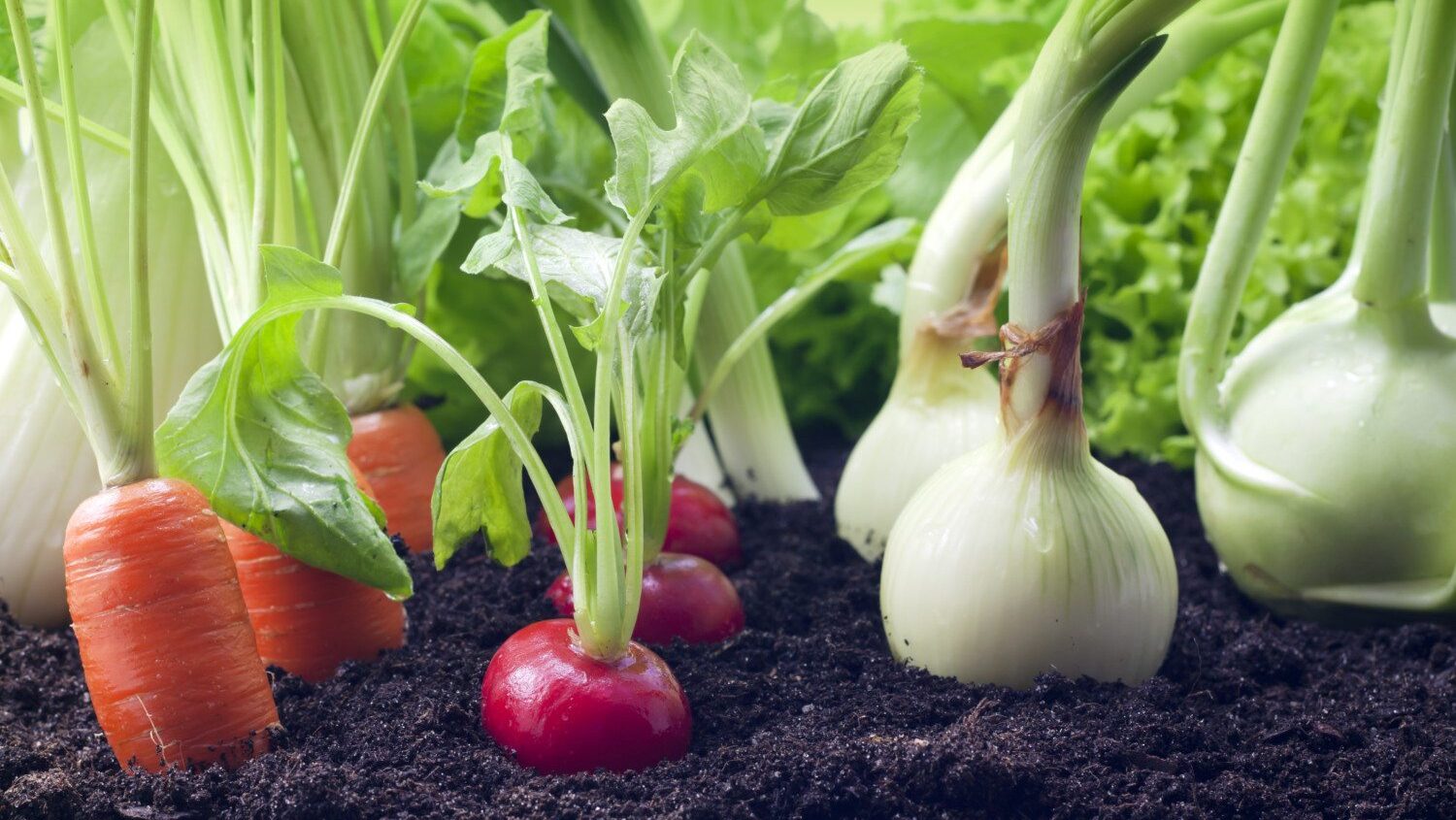
Did you know planting certain vegetables and herbs next to each other helps them grow?
Who knew plants in the garden had best friends? Just like your BFF in middle school who knew how to scare away the “mean girls,” some plants have their “friends’” backs (er, sides). Strategically growing certain plants side-by-side is called companion planting, and it’s a way to help all your veggies “graduate” to harvest.
Here are seven dynamic duos to plant next to one another in your garden. With proper care, both plants in each pair should be thriving in no time.
What To Plant Side-By-Side
1. Cabbage And Marigolds
Take those cabbages that you’re ready to put into the ground, and plant them next to some lovely marigolds. Why? Cabbageworms, cabbage moths and other pests will want to start chomping on the cabbage. Not to worry, though — marigolds help to repel those crawling menaces.
2. Cucumbers And Radishes
Love you some cukes? Plant radishes nearby and make those cucumber beetles skedaddle. (Tansy and nasturtium will also work!) Once you have a cucumber crop, you can use the fruits of your labor to mix up a batch of this cucumber melon sangria!
3. Cucumbers And Sunflowers
Here’s something else you can do for your cucumber pals: Keep them cool by planting sunflowers nearby to provide shade and let them vine up the stalk. We knew sunflowers were pretty, but now it turns out they are practical as well!
4. Onions And Carrots
That stinky onion that you wish you didn’t eat for lunch? It can guard your carrots by taking care of nasty interlopers, like the carrot fly. Other plants from the allium family, such as chives and leeks, will also help.
5. Herbs And Just About Anything!
One good thing to know is that herbs are generally your friends in the garden — and the home! Basil repels flies. Peppermint scares away mice (!), mosquitoes and ants. Rosemary helps shoo away bean beetles, cabbage moths and carrot flies. Lavender repels fleas, moths, flies and mosquitoes.
6. Lettuce And Carrots
Companion planting isn’t just about scaring away insects — it also works to beef up your vegetable harvest. Plant lettuce between rows of carrots and onions, as it will help to suppress weeds by creating shade. When the carrots and onions start to need more space, simply pull out the lettuce and make yourself a beautiful spring salad.
7. Corn, Squash And Beans
The best-known complementary plants are the “three sisters”: corn, squash and beans, which were all grown by Native Americans for centuries. Beans grow up the cornstalks, but they also fix nitrogen in the soil to nurture the corn and squash. The large squash leaves suppress weeds that would compete for nutrients. Like a family, these three nurture each other and work together in perfect harmony!
If abundance is what you seek in your garden, grow plants that get along. They will return the favor with a bounty of healthy vegetables, herbs and flowers!
Easy Container Gardening Kits
If you’re interested in going the container gardening route, here are three kits that take most of the work out of the process. They range in price, but most will cost you at least $100.
1. Cedar Wedge Garden Bed
This little wedge is the perfect garden bed to put on your deck. Made out of cedar, this wedge design allows for roots to go deep into the soil without taking up too much space. Best of all, it doesn’t require the use of any tools for installation.
2. Rustic Elevated Garden Bed
If you’re looking for something that’s raised up a bit so it’s easier to work with, then this elevated bed is perfect. This is one of the most popular models at Home Depot and has a 4.6 / 5 rating.
3. Garden Bed With Critter Guard Fence
If critters are a problem for you, this kit provides an extra barrier between your delicious fruits and veggies and those pesky animals.
What are your favorite vegetables and herbs to grow each summer? Or are you more of a flower garden sort?
